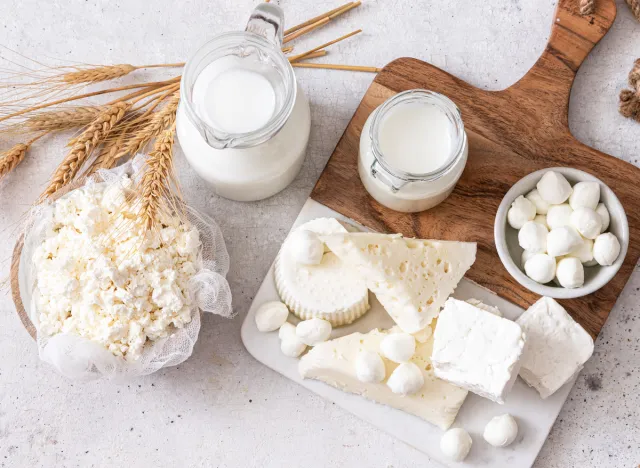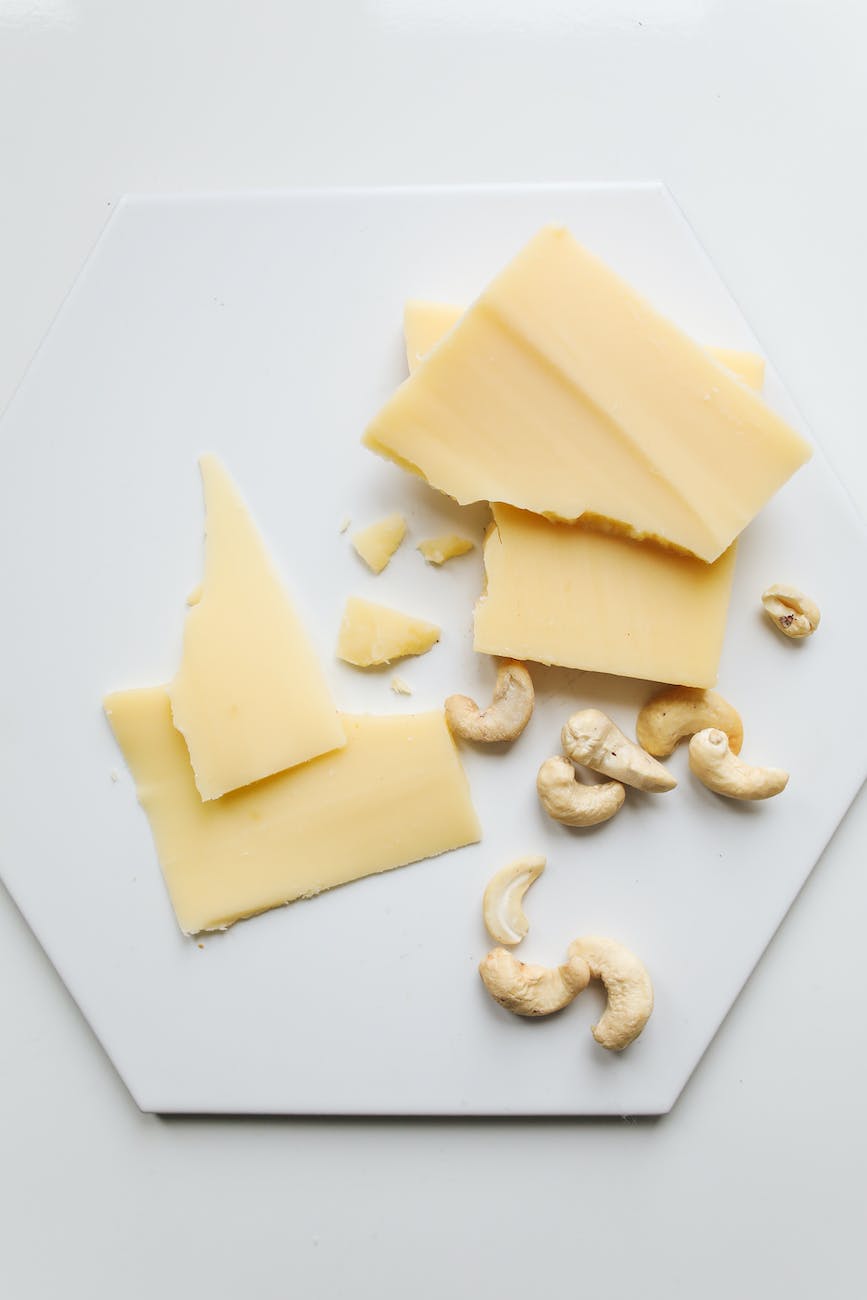
Cheese has a magical way of enhancing countless dishes, whether it’s adorning pizza, elevating your pasta, or accompanying a cracker. However, if you’re striving to shed some pounds or maintain a healthier lifestyle, you might be cautious about your cheese consumption. Cheese, typically rich in fat, especially saturated fat, and calories, can pose challenges to your weight loss aspirations.
Nevertheless, the solution doesn’t always require eliminating cheese from your diet entirely. Instead, consider swapping it for low-fat alternatives. Stroll down the cheese aisle, and you’ll discover a variety of reduced-fat and non-fat cheese options, processed to eliminate excess fat. Additionally, some cheeses naturally contain lower fat content.
We consulted with two registered dietitian nutritionists to explore the realm of low-fat cheeses and have compiled a list of ten options that can be a guilt-free addition to your diet.

What exactly is reduced-fat cheese, and what are its advantages and disadvantages?
According to Sammi Haber Brondo, a registered dietitian nutritionist and the author of The Essential Vegetable Cookbook, the fat in cheese is primarily saturated fat, notorious for elevating cholesterol levels.
By substituting saturated fats with healthier, unsaturated sources like avocado, olive oil, nuts, and seeds, you can make a more nutritious choice. Low-fat cheeses are processed to remove much of the naturally occurring saturated fat.
However, it’s worth noting that lower fat content often results in less flavor. This drawback arises because the removed fat is frequently replaced with binders to maintain the cheese’s texture.
This alteration can affect both the taste and texture of the cheese, possibly hindering your culinary experience.
In addition, low-fat cheeses may not be as delicious as their full-fat counterparts. They may exhibit issues in terms of texture, becoming overly hard, gummy, or chewy, which can negatively impact their overall appeal.

Recommended: 55 Most Popular American Foods Worth Craving in 2023
Despite these compromises in texture and flavor, many people opt for low-fat cheese to align with their health goals and still savor the taste of cheese. Low-fat cheese provides individuals with the opportunity to adjust their diet to enhance their health without entirely sacrificing their love for this delectable food.
Isabel Maples, a registered dietitian nutritionist and spokesperson for the Academy of Nutrition and Dietetics, underscores that cheese is a beloved ingredient, savored by itself, alongside other foods, or within various recipes.
People may choose low-fat cheeses for diverse reasons: to reduce their fat intake, increase their protein consumption, or cut down on calories.We have also written 25+ authentic Italian side dishes for your your main course.

Can consuming low-fat cheese facilitate weight loss?
While consuming low-fat cheese alone won’t guarantee weight loss, it can be a part of an overall plan to manage your calorie intake. Maples explains that any food can theoretically contribute to weight loss, as there are no intrinsically good or bad foods; all foods can be part of a wholesome diet.
However, when you’re aiming to lose weight, the combined foods you consume should ideally contain fewer calories than your typical intake to create a calorie deficit conducive to weight loss. In this context, replacing regular cheese with low-fat cheese can help reduce your overall calorie intake.
Maples highlights that foods rich in protein are digested more slowly, leading to a greater sense of physical satisfaction.
As individuals reduce their calorie intake, introducing protein-heavy options like low-fat cheese can help stave off hunger without significantly increasing calorie consumption.
Moreover, low-fat cheese is an effective means of reducing your saturated fat intake, especially if you cannot distinguish a noticeable difference in taste compared to regular cheese.
This substitution can be a valuable way to decrease saturated fat levels in your diet, thus promoting heart health.
Strategies for incorporating cheese into your diet while pursuing weight loss goals
Given the concentrated nature of cheese (it takes 10 pounds of milk to produce approximately one pound of cheese), small portions can go a long way, but the calories can add up quickly. To align cheese consumption with your weight management objectives, it’s crucial to practice moderation in your portion sizes.
Here are some useful tips for enjoying cheese while on a weight loss journey:
- Opt for robust cheeses: Strong-flavored cheeses can enhance your dishes without an excessive calorie load. For instance, choose sharp cheddar instead of Colby jack for sandwiches or casseroles. Alternatively, consider blue cheese over American cheese for salads.
- Grate your cheese freshly: Grated cheese can help you spread the flavor further. Parmesan or Romano cheese, for instance, can be a fantastic choice. A small quantity of grated Parmesan cheese, such as one tablespoon, contains only 21 calories and slightly over one gram of fat.
- Freshly grated cheese is often lighter and might give you the sensation of consuming more than you actually are. If you’re grating your cheese, using a Microplane or box grater can make the process quicker and more accessible. Keep in mind that hard cheeses like Parmesan are easier to grate at room temperature, whereas cheeses with a cheddar-like consistency are simpler to grate when cold.

Which cheeses naturally have lower fat content?
Certain cheese varieties inherently contain lower fat content. Choosing reduced-fat versions of these cheeses can provide even fewer calories and fat. Here’s a list of ten low-fat cheeses, each with less than 12 grams of fat per serving, to help you make informed choices:
Cheeses with Less Than 10 Grams of Fat Per Serving:
- Swiss (1 slice): 86 calories, 6.9 grams of fat, 4 grams of saturated fat, 20.4 milligrams of cholesterol, and 9.5 grams of protein.
- Low-Fat Cottage Cheese (1 cup): 163 calories, 2.3 grams of fat, 1.4 grams of saturated fat, 9 milligrams of cholesterol, and 28 grams of protein.
- Part-Skim Ricotta (0.5 cup): 171 calories, 9.8 grams of fat, 6.1 grams of saturated fat, 38.4 milligrams of cholesterol, and 14.1 grams of protein.
- Part-Skim Mozzarella (1 ounce): 72 calories, 4.5 grams of fat, 2.9 grams of saturated fat, 18.1 milligrams of cholesterol, and 6.9 grams of protein.
- Reduced-Fat Muenster (1 slice): 75.9 calories, 4.9 grams of fat, 3.1 grams of saturated fat, 17.6 milligrams of cholesterol, and 6.9 grams of protein.
- Reduced-Fat Provolone (1 ounce): 77.7 calories, 5 grams of fat, 3.2 grams of saturated fat, 15.6 milligrams of cholesterol, and 7 grams of protein.
- Reduced-Fat Mexican Blend (1 ounce): 79.9 calories, 5.5 grams of fat, 3.3 grams of saturated fat, 17.6 milligrams of cholesterol, and 7 grams of protein.
Cheeses with Less Than 12 Grams of Fat Per Serving:
- Reduced-Fat Cheddar (1 ounce): 49 calories, 2 grams of fat, 1.2 grams of saturated fat, 5.6 milligrams of cholesterol, and 6.9 grams of protein.
- Reduced-Fat Parmesan (1 ounce): 75.1 calories, 5.7 grams of fat, 3.8 grams of saturated

Frequently Asked Questions (FAQ)
Low-fat cheeses are cheese varieties that have had much of their fat content removed during processing. This reduction in fat content sets them apart from their regular, full-fat counterparts.
Yes, low-fat cheeses can be a part of a weight loss plan and a healthier diet. They contain fewer calories and less saturated fat, making them a more heart-healthy and calorie-conscious choice.
Low-fat cheeses can provide similar protein and essential nutrients while reducing your saturated fat intake, which is beneficial for heart health. They allow you to enjoy cheese with fewer calories.
Yes, low-fat cheeses can generally be used in the same way as regular cheeses in recipes. However, they might have slightly different textures and melting properties, so you may need to adjust cooking times and methods accordingly.
Low-fat cheeses such as part-skim mozzarella, Swiss, and low-fat cottage cheese are among the best options for weight loss due to their reduced fat and calorie content.

What are the flavor profiles of low-fat cheeses compared to regular cheeses?
- Low-fat cheeses often have a milder flavor compared to regular cheeses due to the reduced fat content. While the taste is different, it can still be enjoyable in various dishes.
Are there any low-fat cheeses that are naturally lower in fat without processing?
- Yes, some cheeses naturally contain lower fat content. For example, Swiss cheese is naturally lower in fat and can be found in both regular and reduced-fat versions.
Can you provide a list of specific low-fat cheeses that are suitable for those looking to lose weight?
- Certainly! Some examples of low-fat cheeses include Swiss, low-fat cottage cheese, part-skim ricotta, part-skim mozzarella, reduced-fat Muenster, reduced-fat Provolone, and reduced-fat Mexican Blend. These cheeses contain less than 10 grams of fat per serving and can be part of a balanced weight loss plan.
